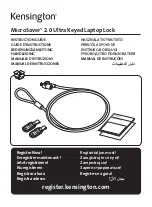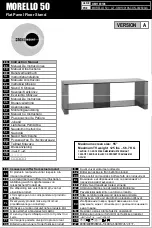
Neutral Density
Filters
A Comparison Test
eutral density (ND) filters have many applications. They are best
for making adjustments in excessive light situations, especially
when they cannot be handled in any other way. The filters’
usefulness is based on their ability to absorb light evenly throughout
the visible spectrum. That’s what makes them "neutral." They are not
supposed to produce a color bias.
Tiffen ND filters always have been designed to function similarly to the
traditional industry standard, the Kodak Wratten gel filters. Decades of
successful production use are evidence that they produce photographi-
cally neutral results. Even so, when a leading dealer came to us with his
own test slides, we felt that they were of sufficient interest to share
them with you, our customers.
First a little background as to their source. Although the dealer
requested that we maintain their anonymity, they are, in fact, one of
our worldwide dealers and they represent the other filter manufacturers
in the test. All of the tested filters were pulled from their own stock,
without any special selection process.
N
W ND9
W ND3
T ND3
S ND3
H ND3
W ND6
T ND6
S ND6
H ND6
NO FILTER
T ND9
S ND9
H ND9
THE TEST
The slides represent comparisons of color charts
made through neutral density (ND) filters from vari-
ous manufacturers in densities of 0.3, 0.6, and 0.9.
They are Kodak Wratten (W), Tiffen (T), Schneider (S),
and Harrison (H). One control shot was made without
a filter to provide a basis for comparison.
During the test, the Kodak Wratten gel filters
provided clean, unbiased color reproduction. All three
filter examples are the same in appearance as the
unfiltered control image. Not surprisingly, the Tiffen
ND filters performed in a virtually identical neutral
manner as the Wratten gel filters.
On the other hand, the same could not be said
for the other two manufacturers’ tested products.
In each case, there is a serious color cast, which
is imparted by the supposedly "neutral" filters. The
bias, toward blue in one case and red in the other,
is even worse when the filter density increases.
The color casts are especially apparent in the
ND 0.9 examples.
The reason these filters may appear suitable for
use, when you only otherwise take a visual look
through them, is that it is generally hard to tell how
neutral an ND filter is unless you have a standard
for comparison. This is often not available when the
cameraman first holds the filter to his eye. The real
significance of this test is the direct comparison of
the performance of these filters on reversal film
(which represents the original image unaffected by
subsequent printing variances, as would have been
the case with tests on negative film). Testing was
done in a controlled situation. This allows the viewer
to see clearly the relative abilities of these filters to
produce neutral results.
It is also important to note that these tests were
not influenced in any way by anyone at Tiffen. They
were solely and independently initiated, produced,
and provided by our dealer, who found the results of
sufficient importance to make them available to us.
Next time you have a requirement for a neutral
density filter, to improve the quality of your image,
we at Tiffen think you know where to go to get the
absolute best quality for your project.
Neutral Density Filters Comparison


















